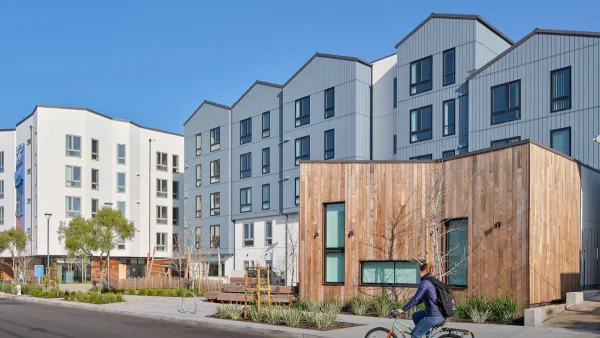So-called "intentional communities" are a small, albeit growing trend in the housing market. Could co-housing be making a comeback?
While 60s-era communes brought together residents who wanted to work together on similar interests or concerns, modern day co-housing -- also known as 'intentional communities' -- are more likely to attract very diverse groups of people who want to explore a different form of socializing while maintaining privacy and owning their own property.
"In the United States it is estimated that there are 80 active co-housing communities up and running throughout the country and another 100 in the planning stage." The communities can vary from detached homes to condominiums, clustered around a community green or courtyard. "Preparation of and participation in community meals (which tend to be served two or three times a week) and other activities is entirely voluntary."
The model of living has growing interest among those looking for a sense of community, and with a growing number of retirees, attention is also being given to elder co-housing.
FULL STORY: It Might Seem Like A Commune But Co-housing Is Not A Sixties Idea

Planetizen Federal Action Tracker
A weekly monitor of how Trump’s orders and actions are impacting planners and planning in America.

San Francisco's School District Spent $105M To Build Affordable Housing for Teachers — And That's Just the Beginning
SFUSD joins a growing list of school districts using their land holdings to address housing affordability challenges faced by their own employees.

Vehicle-related Deaths Drop 29% in Richmond, VA
The seventh year of the city's Vision Zero strategy also cut the number of people killed in alcohol-related crashes by half.

Downtown Portland Ready for Maine's Tallest Building
The city of Portland anticipates a major new urban development addition called the “Old Port Square” project.

The EV “Charging Divide” Plaguing Rural America
With “the deck stacked” against rural areas, will the great electric American road trip ever be a reality?

Judge Halts Brooklyn Bike Lane Removal
Lawyers must prove the city was not acting “arbitrarily, capriciously, and illegally” in ordering the hasty removal.
Urban Design for Planners 1: Software Tools
This six-course series explores essential urban design concepts using open source software and equips planners with the tools they need to participate fully in the urban design process.
Planning for Universal Design
Learn the tools for implementing Universal Design in planning regulations.
Borough of Carlisle
Smith Gee Studio
City of Camden Redevelopment Agency
City of Astoria
Transportation Research & Education Center (TREC) at Portland State University
City of Camden Redevelopment Agency
Municipality of Princeton (NJ)


























